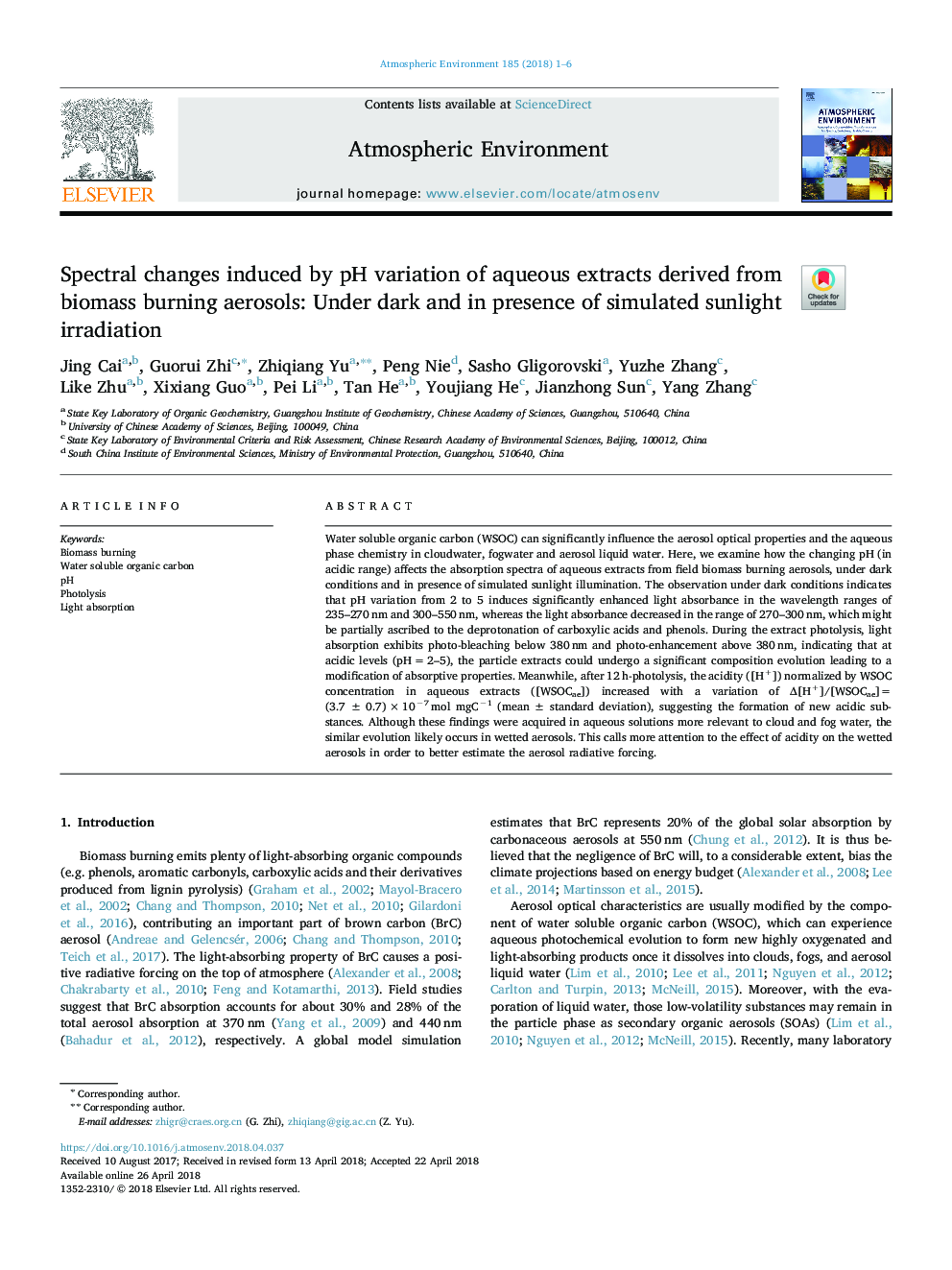| Article ID | Journal | Published Year | Pages | File Type |
|---|---|---|---|---|
| 8863710 | Atmospheric Environment | 2018 | 6 Pages |
Abstract
Water soluble organic carbon (WSOC) can significantly influence the aerosol optical properties and the aqueous phase chemistry in cloudwater, fogwater and aerosol liquid water. Here, we examine how the changing pH (in acidic range) affects the absorption spectra of aqueous extracts from field biomass burning aerosols, under dark conditions and in presence of simulated sunlight illumination. The observation under dark conditions indicates that pH variation from 2 to 5 induces significantly enhanced light absorbance in the wavelength ranges of 235-270â¯nm and 300-550â¯nm, whereas the light absorbance decreased in the range of 270-300â¯nm, which might be partially ascribed to the deprotonation of carboxylic acids and phenols. During the extract photolysis, light absorption exhibits photo-bleaching below 380â¯nm and photo-enhancement above 380â¯nm, indicating that at acidic levels (pHâ¯=â¯2-5), the particle extracts could undergo a significant composition evolution leading to a modification of absorptive properties. Meanwhile, after 12â¯h-photolysis, the acidity ([H+]) normalized by WSOC concentration in aqueous extracts ([WSOCae]) increased with a variation of Î[H+]/[WSOCae]=(3.7â¯Â±â¯0.7)â¯Ãâ¯10â7â¯mol mgCâ1 (meanâ¯Â±â¯standard deviation), suggesting the formation of new acidic substances. Although these findings were acquired in aqueous solutions more relevant to cloud and fog water, the similar evolution likely occurs in wetted aerosols. This calls more attention to the effect of acidity on the wetted aerosols in order to better estimate the aerosol radiative forcing.
Related Topics
Physical Sciences and Engineering
Earth and Planetary Sciences
Atmospheric Science
Authors
Jing Cai, Guorui Zhi, Zhiqiang Yu, Peng Nie, Sasho Gligorovski, Yuzhe Zhang, Like Zhu, Xixiang Guo, Pei Li, Tan He, Youjiang He, Jianzhong Sun, Yang Zhang,
